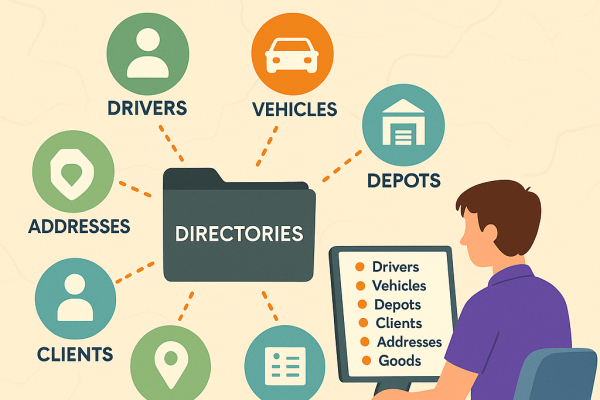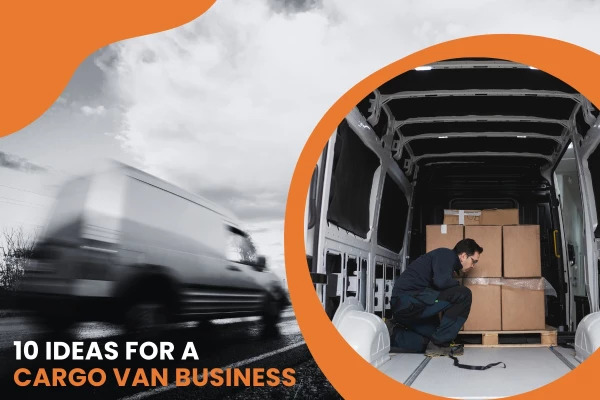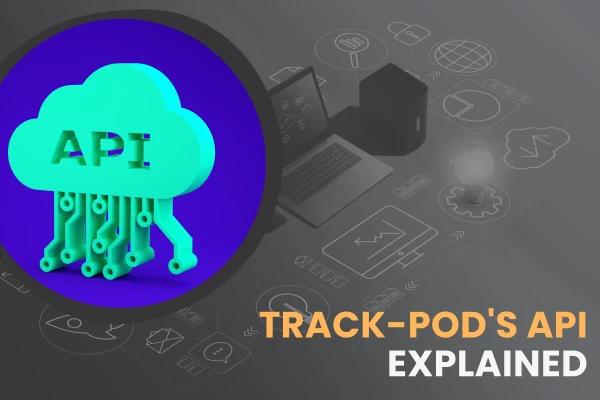Choosing the Right Licensing Model: Per Driver vs Per Order

by
Alina Kostukova
May 19, 2023
When it comes to delivery management software, the two most common licensing models are 'Per Driver' and 'Per Order'.
Some vendors, including OptimoRoute, Routific, and Detrack, charge exclusively per driver/vehicle. The final price depends on the number of vehicles in your fleet. Onfleet, another popular last mile delivery software provider, only offers the "Per Order" licensing model, which means you pay for a number of tasks, not drivers.
Track-POD, on the other hand, provides both pricing options, allowing you to select the one that best suits your business.
Each pricing plan has benefits and drawbacks, but flexibility is the name of the game here. After all, the success of your business depends on your ability to scale with little to no friction.
There are a few factors to take into account when choosing between the two popular licensing models. Let's take a detailed look at each pricing structure with the help of Jordan Marsh, Senior Account Executive here at Track-POD.
Unlocking the benefits of ‘Per Driver’ plans
The 'Per Driver' pricing model charges you based on the number of drivers in your fleet. As your business grows and you add more drivers, your delivery management software costs will increase accordingly. At the same time, you can assign each driver as many tasks as your plan allows without paying extra.
Depending on how many orders you get, you can choose between the following Track-POD plans.
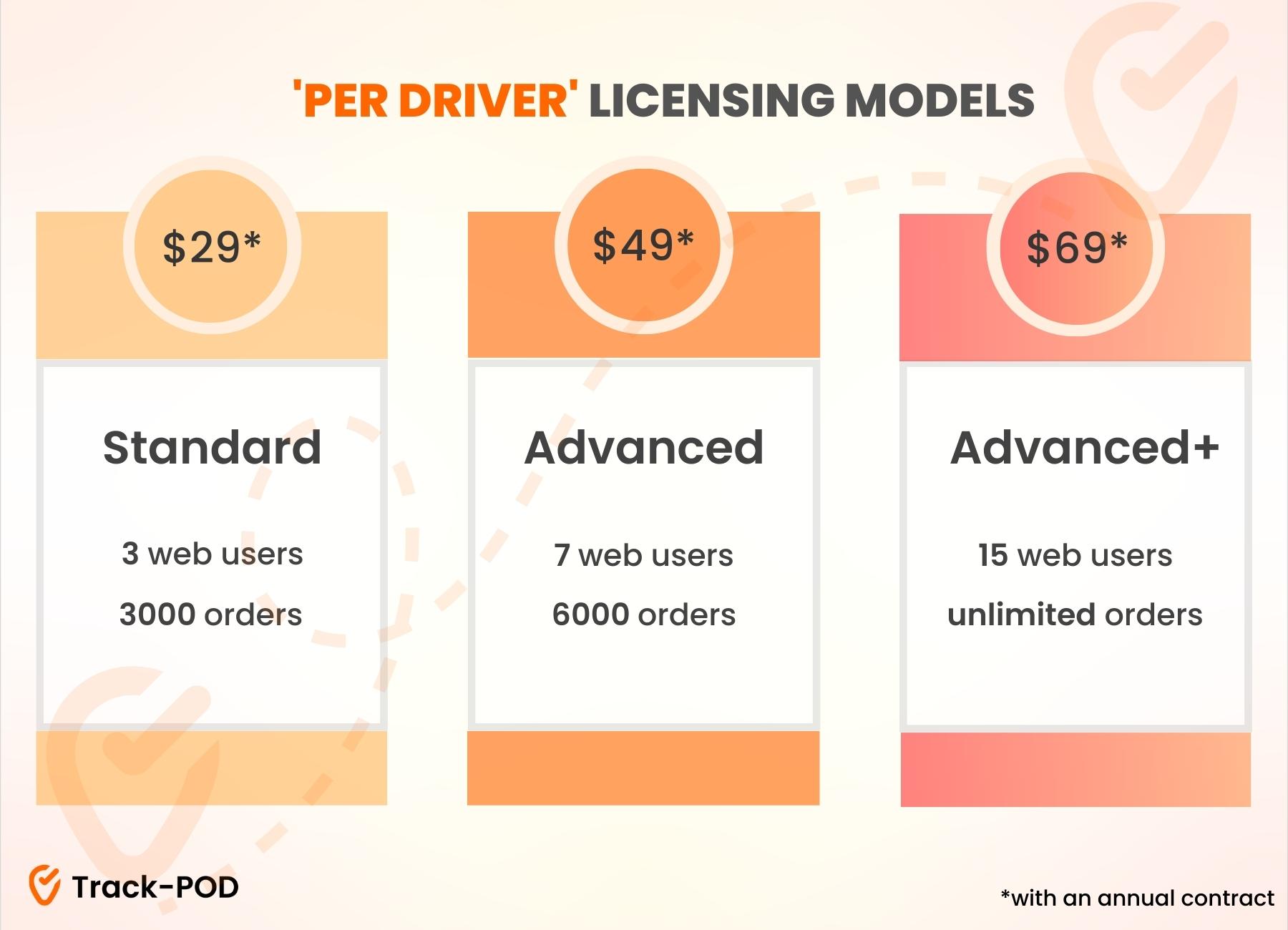
Let's talk about the kinds of businesses that will thrive with the ‘Per driver’ licensing model.
1. Smaller teams management
The 'Per driver' licensing model works well for small teams of 1-3 drivers delivering large numbers of orders. For example, a local restaurant offering delivery may only have a few drivers but get hundreds of orders daily.
The same is true for small e-commerce stores with just a couple of vehicles on board when one courier can complete several routes in a day.
Our "Per Driver" licensing model is best for e-shops and delivery services with a low number of drivers but a high number of deliveries per route.
2. Effortless tracking of in-house drivers
Having fewer drivers on board makes it easier to keep track of deliveries, create and optimize delivery routes. If you take care of 100% of your deliveries, you don't need to add drivers you hire from the outside.
You can easily assign or change delivery routes, manage orders, and keep an eye on driver statistics while having just a few drivers on board.
3. Efficiency with a small back office team
If you have a small team of dispatchers managing a small fleet, one of the ‘Per Driver’ plans might be your go-to option. You can save money by purchasing the "Per Driver" plan since a smaller team does not necessarily need the option of having many web dashboard users.
The most affordable Standard “Per driver” plan supports 3 web users, an Advanced plan - 7 users, while Advanced+ allows 15 users.
This pricing model has a low price point and appeals to small companies with under 3 drivers. You can get started for just $35/month.
4. Swift delivery of small packages
If you are delivering small and lightweight packages, the “Per Driver” plan is a great solution for you, as one courier can handle multiple routes per day.
If your couriers don't have to load and unload heavyweight packages, they can deliver orders more quickly and with less effort.
Pro tip: a barcode scanner app can help your drivers load multiple packages into the vehicle in the correct order, so they can deliver orders more effectively.
Maximizing your productivity with 'Per Order' plans
With the "Per Order" pricing model, you can have as many vehicles and drivers as you need at any time. Instead of paying for a fixed number of drivers, your will pay for the orders you handle in a month.
Track-POD's S plan supports an unlimited number of drivers and 1500 monthly orders, while the M plan increases that number to 3000, the L plan to 6000, and the XL plan to 12000.
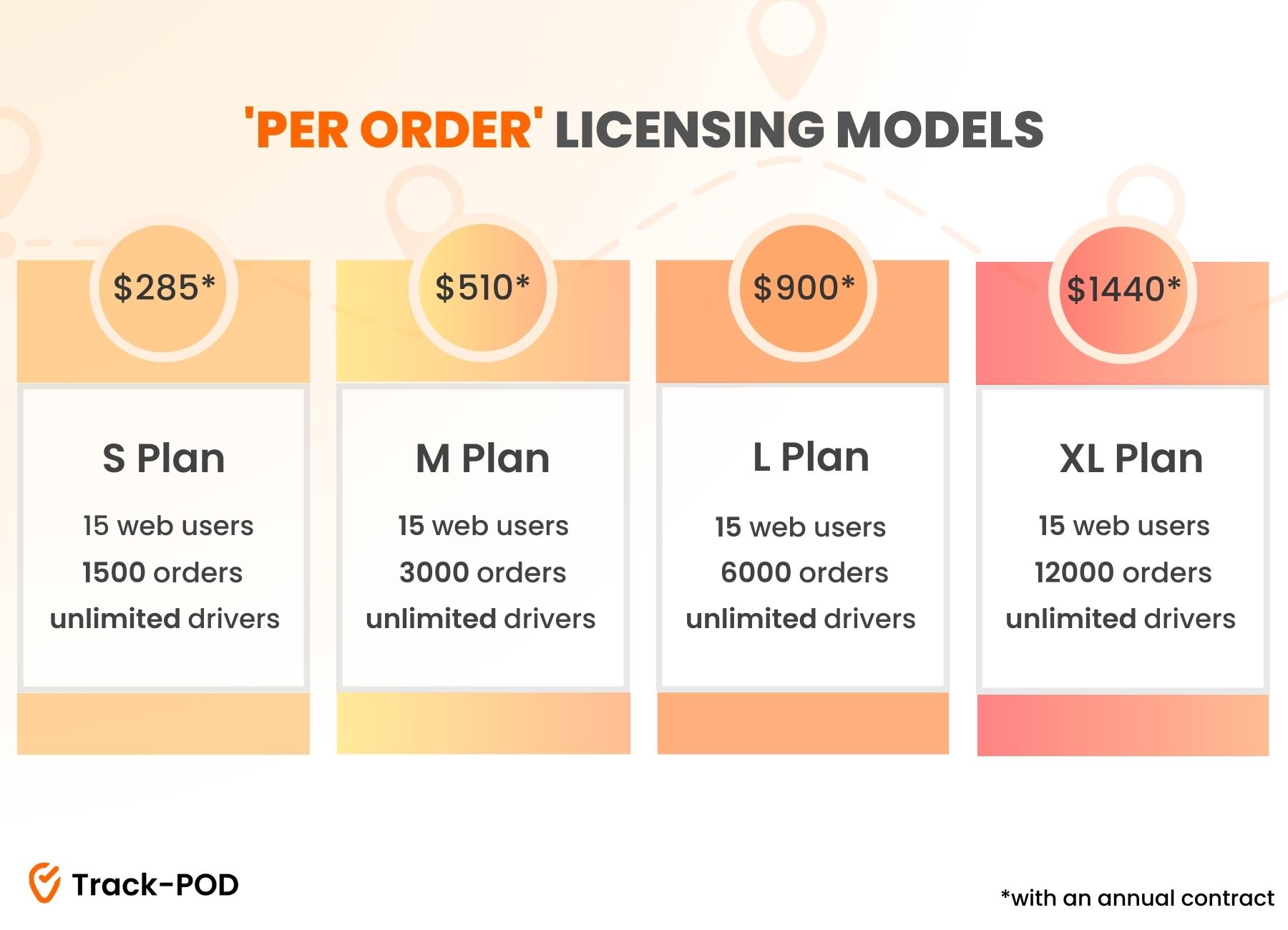
1. Large fleet optimization
Larger companies with a sizeable fleet can benefit from the 'Per Order' pricing structure. The larger your fleet is, the more changes happen over time. By paying per number of orders a month, drivers can be added and removed with minimum hassle.
For example, a delivery service with a predictable order volume and set delivery times may find it easier to work with part-time drivers. In that case, the flexibility of adding unlimited new drivers is crucial.
2. Lower volume of orders
If you have a limited number of orders per day due to route complexity or longer load/unload time, you will benefit from a ‘Per Order’ pricing license.
Paying a 'Per Order' rate may be more cost-effective since more drivers may be required to fulfill your orders, especially if you encounter a seasonal increase in order volume.
3. Bulky items delivery
If your couriers are dealing with heavy items, like furniture, electronics, or other types of equipment, you might want to consider any of the "Per order" plans. When one heavy delivery takes a long time, you need to send out more drivers to complete all the orders on time.
Clients that are delivering large items typically choose our “Per Driver” model. They have a low delivery volume but a large fleet. Furniture manufacturers are a common one.
4. Large back office team management
If you have a large back office staff (dispatchers, managers, customer support), you will benefit from a maximum number of web users (15) that are included in all Track-POD’s ‘Per Order’ plans.
More web users means better order management and delivery tracking, not to mention more satisfied customers. Track-POD also allows you to give users varying levels of permissions based on their roles.
Pro tip: if 'Per Order' plans don't really work for you but you want to have several dashboard users, the Advanced+ 'Per driver' plan might be a better fit. It allows you to add 15 web users.
Final verdict
Finally, let’s sum up all the benefits of both licensing models.
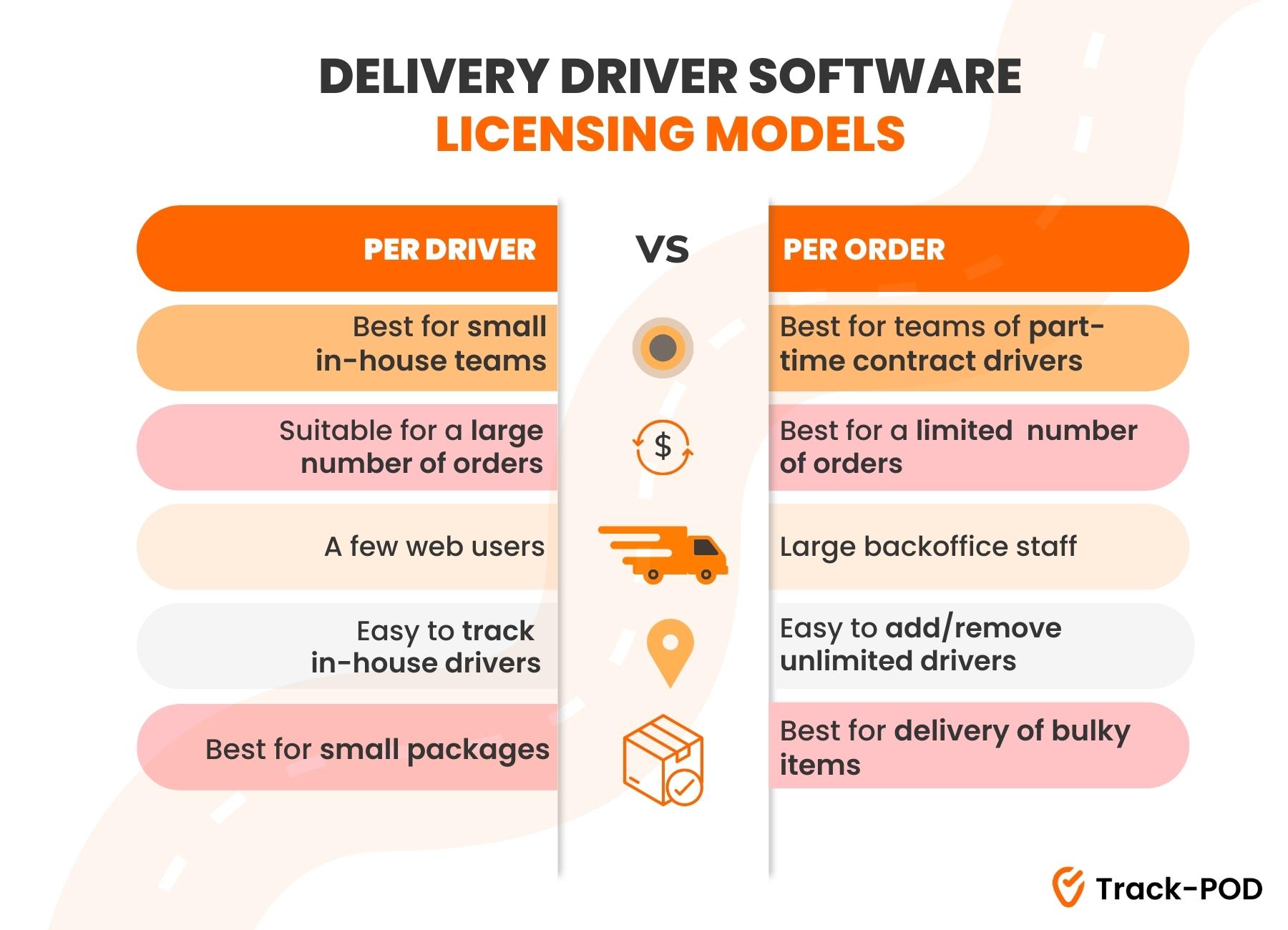
Recap
We've talked about the pros and cons of both 'Per Driver' and 'Per Order' license plans.
- "Per Driver" plans have great benefits and affordable prices. This type of license is good for a small team with a few drivers and a high volume of daily orders. It also works well for delivering smaller packages in the local area.
- On the other hand, "Per Driver" plans might not be as cost-effective for businesses with larger teams and big fleets.
- If you have a big fleet and a growing number of orders, the "Per Order" license will help your business. It's easy to add and remove drivers and dashboard users as the team grows. This licensing plan is also effective for heavy package deliveries since you need more drivers to get all the orders completed.
- You can make an informed choice that will improve your daily logistics by taking into consideration the size of your fleet, the volume of orders, the kind of packages you deliver, and your budget.
About The Author
Alina Kostukova
Skilled marketing content creator with a background in digital media and public relations. Focused on creating first-rate text and visual content that stands out and tells compelling stories.






